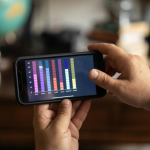The gap between how brands think creator partnerships work and how they actually function causes more campaign failures than any other factor. Companies approach influencer collaborations with assumptions borrowed from traditional advertising, outdated social media knowledge, or surface-level understanding of what creators do. The result? Campaigns that frustrate everyone involved, waste budget, and produce content that audiences scroll past without a second thought.
Treating Creators Like Traditional Ad Placements
The biggest mistake shows up immediately in how brands frame partnership requests. They approach creators as if they’re buying billboard space or television commercials – provide the messaging, dictate the format, control every detail, then wonder why the content feels forced and performs poorly.
Creators aren’t blank canvases for brand messaging. They’ve built audiences by developing distinct voices, content styles, and relationships with followers. Those audiences follow them for specific reasons, and they can immediately tell when something feels off-brand for that creator. The authenticity that makes influencer marketing work in the first place evaporates when brands insist on turning creators into corporate spokespersons.
This shows up in painful ways. Brands write exact scripts they expect creators to follow word-for-word. They demand specific shots, angles, and editing that match brand guidelines but clash completely with the creator’s usual content. They strip away the personality and spontaneity that made the creator successful, then act surprised when engagement tanks.
The irony is that brands chose these creators because their existing content resonated with target audiences. Then they immediately prevent the creator from making the kind of content that attracted attention in the first place. It’s backwards logic that undermines the entire premise of influencer marketing.
Micromanaging Content Creation
Control issues plague brand-creator relationships constantly. Brands want approval over every frame, every word, every music choice. They demand multiple rounds of revisions, nitpick details that audiences won’t notice, and drag out approval processes until content feels stale before it even posts.
This micromanagement stems from fear – fear the creator will say something problematic, fear the content won’t align perfectly with brand standards, fear of losing control over messaging. But the tight grip backfires. Creators know their audiences and platforms better than brand managers do. When brands override that expertise with corporate anxiety, content suffers.
The approval process itself becomes a problem. Three weeks to review a 15-second video means the creator can’t respond to trends, can’t capture timely moments, and loses the spontaneity that makes social content work. By the time approvals come through, the cultural moment has passed and the content feels dated.
Good partnerships establish guardrails instead of dictating every detail. Clear boundaries about what’s off-limits, key messages that need inclusion, and brand values that must be respected – but within those parameters, creators need freedom to create in their authentic style.
Misunderstanding Platform Dynamics
Brands often reveal they don’t actually understand how the platforms work, which becomes obvious to creators immediately. They request content formats that don’t match platform norms, ask for features that don’t exist, or insist on approaches that algorithms actively suppress.
Instagram provides countless examples of this disconnect. Working with a trusted Instagram influencer agency for authentic collaborations helps brands avoid requesting static feed posts when Reels get significantly more reach, or insisting on lengthy captions that don’t match how users actually consume content on the platform. The platform’s algorithm priorities shift constantly, and creators stay current because their livelihoods depend on it – but brands often operate on outdated information.
The technical misunderstandings extend to basic mechanics. Brands don’t realize that certain post types can’t include links, that Stories disappear after 24 hours requiring different archiving approaches, or that scheduling tools affect performance differently than posting directly. These gaps slow down campaigns and create friction over issues that seem basic to anyone who actually uses the platforms daily.
Platform demographics and usage patterns matter too. What works on TikTok doesn’t automatically translate to Instagram, and Instagram content doesn’t port over to YouTube. Each platform has distinct audience expectations, content formats, and engagement patterns. Brands treating all platforms as interchangeable reveal they’re not serious about understanding where their campaigns run.
Negotiating Like Creators Are Desperate
The negotiation approach many brands take shows fundamental disrespect for creators as business partners. They lowball rates, demand extensive rights and usage for minimal payment, throw in “exposure” as if that pays bills, and generally treat creators as if they should feel grateful for any brand attention.
This attitude backfires in obvious ways. Quality creators with engaged audiences have options – multiple brands want to work with them. The ones willing to accept insulting terms are usually desperate for any income, which often correlates with lower quality, fake followers, or audiences that don’t actually engage. Brands trying to get premium results at budget prices end up with budget results.
Rights and usage terms reveal whether brands understand how creator partnerships work. Requesting perpetual rights to content for a one-time fee shows the brand doesn’t grasp that the content is valuable specifically because it comes from that creator. Wanting to use influencer content across all brand channels without additional compensation is asking creators to surrender their primary asset for free.
The worst negotiation mistakes combine low pay with high demands – asking creators to produce multiple content pieces, grant extensive usage rights, meet tight deadlines, and handle multiple revision rounds, all for rates that barely cover their time and production costs. Then brands wonder why the final content feels phoned in.
Ignoring the Relationship Building Aspect
Brands often treat creator partnerships as transactions – pay money, get content, move on. They don’t invest in building actual relationships, understanding creator motivations beyond payment, or thinking about partnerships as ongoing collaborations rather than one-time purchases.
This transactional mindset shows up in communication patterns. Brands ghost creators between campaigns, only reaching out when they need something. They don’t engage with creators’ organic content, don’t build rapport, don’t treat them as partners worth maintaining relationships with between paid projects.
Long-term partnerships almost always perform better than one-off campaigns. Audiences notice when a creator genuinely uses and appreciates a product versus when they’re doing a single sponsored post. Ongoing relationships allow creators to integrate products naturally into their content over time, building authentic advocacy rather than obvious advertisements.
But building those relationships requires effort brands often won’t invest. It means responding promptly to creator questions, being flexible when reasonable requests come up, paying invoices on time without requiring excessive follow-up, and generally treating creators like valued business partners rather than vendors to be managed.
Setting Unrealistic Expectations
Campaign goals brands set often reveal they don’t understand what creator partnerships can and can’t accomplish. They expect massive immediate sales spikes from awareness-focused campaigns, want direct attribution that social platforms can’t provide, or assume one post will transform their entire business trajectory.
This disconnect creates disappointment even when campaigns objectively succeed. A post that generates strong engagement, reaches the target audience, and creates brand awareness gets judged a failure because it didn’t directly produce thousands of sales that day. The brand set impossible metrics based on misunderstanding what influencer marketing does.
Timeline expectations fall into the same trap. Brands want campaigns planned and executed in days when the process realistically takes weeks. They don’t account for creator schedules, content production time, platform best practices around posting frequency, or the time required for proper planning and strategy.
Performance benchmarks brands reference often come from outdated data or different contexts entirely. They expect engagement rates that were normal three years ago but don’t reflect current platform dynamics. They compare results across different platforms or industries without acknowledging those contexts produce different performance standards.
Missing the Forest for the Trees
The underlying issue tying all these mistakes together is that brands focus on controlling individual campaign elements while missing the bigger picture of what makes creator partnerships work. They obsess over specific words in captions while ignoring whether the overall content will resonate. They demand perfect brand alignment in every frame while sacrificing the authenticity that gives influencer marketing its power.
Successful creator partnerships require brands to think differently than they do about traditional marketing. It means loosening control, trusting expertise, investing in relationships, understanding platforms, setting realistic expectations, and recognizing that the value creators provide goes beyond just their audience numbers. Brands that figure this out build creator programs that actually drive results. Those that don’t keep making the same mistakes while wondering why their influencer marketing never works.




